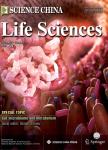A new pattern-based method for identifying recent HIV-1 infections from the viral env sequence
A new pattern-based method for identifying recent HIV-1 infections from the viral env sequence作者机构:Key Laboratory of Bioinformatics Ministry of Education School of Life Sciences Tsinghua University Beijing 100084 China State Key Laboratory for Infectious Disease Prevention and Control National Center for AIDS/STD Control and Prevention Chinese Center for Disease Control and Prevention Beijing 102206 China
出 版 物:《Science China(Life Sciences)》 (中国科学(生命科学英文版))
年 卷 期:2012年第55卷第4期
页 面:328-335页
核心收录:
基 金:supported in part by the National Natural Science Foundation of China (Grant No. 30870475) Ministry of Science and Technology of China (Grant No. 2009CB918801) Ministry of Health of China (Grant No. 2008ZX10001-003) the International Development Research Center, Ottawa, Canada (Grant No. 104519-010)
主 题:determination of HIV recent infections estimation of population incidence viral genetic diversity pattern-based distance
摘 要:The long asymptomatic stage of HIV infection poses a great challenge in identifying recent HIV infections. This is a bottleneck for monitoring HIV epidemic trends and evaluating the effectiveness of national AIDS control programs. Several serological methods were used to address this issue with some success. Because of high false-positive rates in patients with advanced infection or in ART treatment, UNAIDS still hesitates to recommend their use in routine surveillance. We developed a new pattern-based method for measuring intra-patient viral genetic diversity for determination of recent infections and estimation of population incidence. This method is verified by using several datasets (424 subtype B and 77 CRF07_BC samples) with clearly identified HIV-1 infection times. Pattern-based diversities of recent infections are significantly lower than that of chronic ones. With larger window periods varying from 200 to 350 days, a higher accuracy (90% 95%) not affected by advanced disease nor ART treatment could be obtained. The pattern-based genetic method is supplementary to the existing serology-based assays, both of which could be suitable for use in low and high epidemic regions, respectively.



